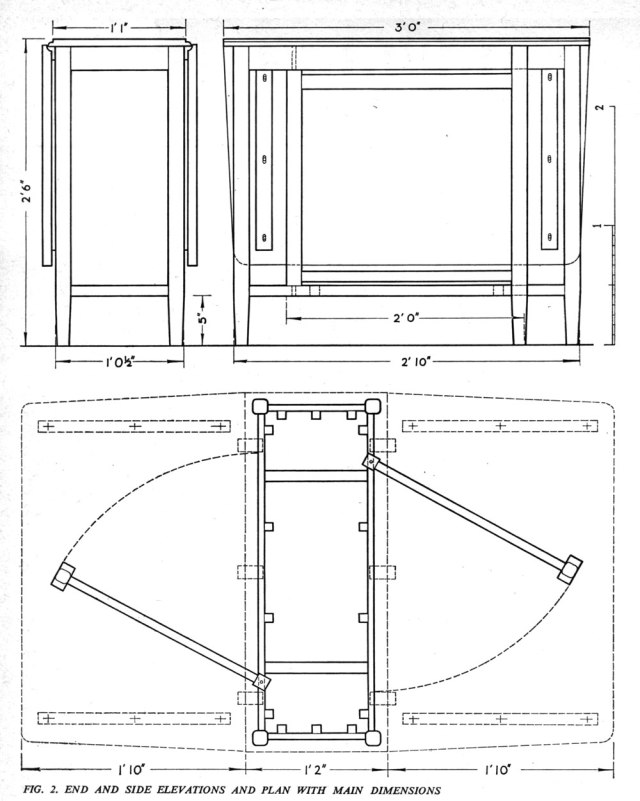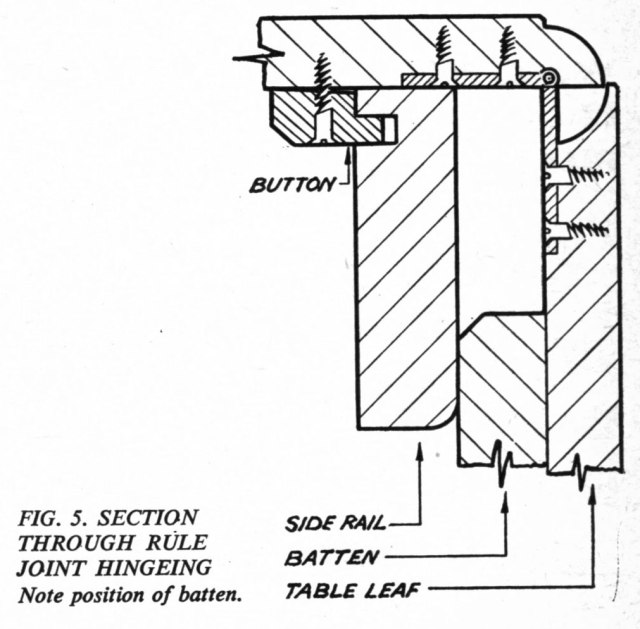The Pace –

Are we becoming adjusted to speed? I was talking a few days ago to a factory worker who thinks we are and that men are changing and will go on changing under its influence. “Everybody is working,” he said, referring to husbands and their wives, even children in holiday times. “The pressure is terrific.”
Conversely, so are the tensions. Perhaps these are at the root of the restlessness of some men, who seem to be always on the move, and in the growing number of others who, in their leisure, embark on creative, often very exacting work. With outlets like these, tensions tend to diminish, more so than if a man simply relaxes into complete idleness.
The important difference is that we make our own speed and with this comes the feeling of release. When we want to work quickly, there are the small power tools to take the edge off our impatience. When we want to taste to the full the luxury of unhurried, relaxed work, then we can settle down to a job with all the sober pleasure of an oldworld craftsman, finding perhaps some stray particles of wisdom touch us unaware.
But however we work, the thing of prime importance is to live, really live in the job of the moment so long as it lasts. Once we begin to cast our eyes ahead to the next item on the schedule, away goes peace and back come the tensions. When this happens, reasonable speed looks only an irritant, hands fumble through sheer unmitigated impatience. And that kind of impatience is the very devil in creative work. Unless we are careful, it mars the work, it certainly mars our temper and our enjoyment of the job. For the great thing about craft work when we do it on our own terms, is that it can be so thoroughly enjoyable. It has the power to take a man right out of himself, right into the thing he is doing, an excellent therapy against the stringencies of a busy world.
But the mind, being so much quicker than the hand, can easily betray us, so that a great part of the patience of true craftsmanship comes from keeping the mind reined in, never to be tempted to dream about the following job while we are doing this one, so risking making this one look like an interminable nuisance. “Little by little and bit by bit, that’s the way you does it,” as an old gardener once said to me reprovingly, and it is a good, steadying philosophy when we are getting a bit ahead of ourselves.

As a matter of fact, it is quite remarkable how many men today are learning to take the long view. They may have bought a partly derelict property at a bargain price or have determined to modernise their old-fashioned house, but whatever it is that starts them going the project is often one which has to be carried out over a long period of spare-time work. Some men even put themselves to school first for one or other of the essentials, such as bricklaying, engaging this with some other skill they already have. The result is often first-class. When a man puts his whole mind and will to a job, amateur or part amateur though he be, it is remarkable what excellence he can achieve. The trouble with most of us most of the time is that minds and wills are only half engaged. Put the whole of ourselves into a job and the good thing emerges. What is most noticeable is how readily these men shape down to the steady, progressive, long-term view, neither hurrying, nor unduly worrying, but taking each stage as it comes, dealing with it so thoroughly that care goes a long way towards meeting the demand for expertise. Because their number is now increasing all around, there is almost certain to be a friend or neighbour able to help and advise at difficult moments. And it is not at all unknown for a lecturer at a Technical College, becoming interested in the ambitious projects of his pupils, going out to give them a hand over the tricky bits.
It is a new wave of craftsmanship that has come upon us, born of changed social conditions. Before the war no ordinary householder, however skilled, would have dreamed of attempting single-handed the jobs which his modem counterpart undertakes. It is craft work from quite a different direction, bringing with it an ability and sense of independence which are the best kind of answer to the various pressures which make up the modern world.
It is the ordinary man standing squarely on his own feet, learning to “do” for himself once more and finding quite a bit of enjoyment and an amazing potential in the doing. The general collapse and withdrawal of handicrafts from industry is helping to bring about a revival in our very midst. Truly we are adjusting ourselves to changes of all kinds, not only pace. Pace, indeed, can kill. It can also be exhilarating.
— The Woodworker magazine, September 1964




